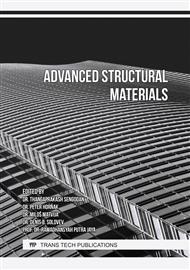p.41
p.49
p.59
p.67
p.83
p.93
p.101
p.109
p.117
Analysis and Optimization of Machinability of Al2O3 and Fly Ash Reinforced Aluminum Hybrid Composites Using Carbide Inserts
Abstract:
Aluminum matrix hybrid composites reveal excellent mechanical behavior compared to traditional materials for a wide range of conditions and applications. However, the machining of this kind of composite is a challenging job due to its improved mechanical hardness. The problems faced during the cutting of these composites are increased machining forces, poor surface quality, and increased tool wear. Many types of research are still in progress across the world to overcome these issues by using a variety of inserts and processing constraints. So, this paper is mainly focused on the study of the machinability of aluminum hybrid composites. The composites are synthesized by employing stir casting via varying the filler content, stirring duration, and speed. The fabricated composites are machined using coated and uncoated carbide inserts. Machining forces, surface roughness, and insert wear are assessed to learn the machinability of these materials by varying the machining constraints. Taguchi analysis was employed to assess the effect of the constraints on the retorts. Keywords. Aluminum Hybrid Composites, Stir Casting, Machinability, Taguchi Analysis.
Info:
Periodical:
Pages:
83-92
Citation:
Online since:
March 2023
Authors:
Price:
Сopyright:
© 2023 Trans Tech Publications Ltd. All Rights Reserved
Share:
Citation:



